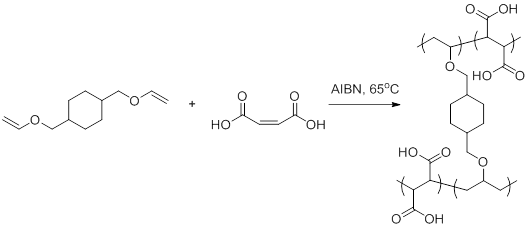It is used to make polymers from vinyl monomers.
Free radical polymerization of a vinyl monomer.
Free radical vinyl polymerization.
Following its generation the initiating free radical adds nonradical monomer units thereby growing the polymer chain.
Following its generation the free radical then reacts with a vinyl monomer that is it adds to one of the electrons of the double bond of the vinyl monomer and the remaining electron becomes the new free radical.
Free radicals can be formed by a number of different mechanisms usually involving separate initiator molecules.
Free radical polymerization frp is one of the most important synthesis routes for obtaining vinyl polymers.
Mechanism of free radical polymerization.
R m rm.
One of the most common and useful reaction for making polymers is free radical polymerization.
One of the most common and useful reactions for making polymers is free radical polymerization.
Vinyl polymers are made from vinyl monomers in a variety of ways like.
It is used to make polymers from vinyl monomers that is from small molecules containing carbon carbon double bonds.
Free radical polymerization frp is a method of polymerization by which a polymer forms by the successive addition of free radical building blocks.
Virtually all of the monomers described above are subject to radical polymerization.
Stability of growing polymer chain ends for nitroxide mediated photo living radical polymerization.
Nitroxide mediated photo living radical polymerization of vinyl acetate.
Colloid and polymer science 2010 288 9 1027 1030.
Free radical polymerization of vinyl monomers.
But one polymer that is made from a monomer substituted on both carbon atoms is polytetrafluoroethylene which dupont makes and calls teflon.
Not many monomers in which hydrogen atoms have been replaced on both carbon atoms will polymerize.

